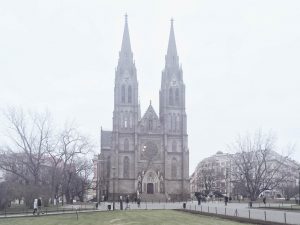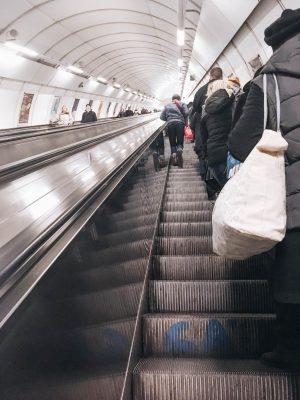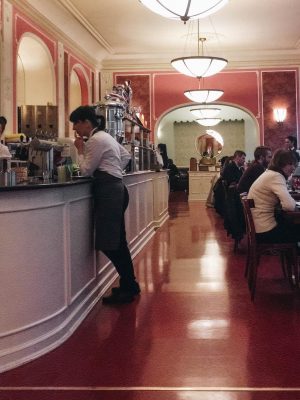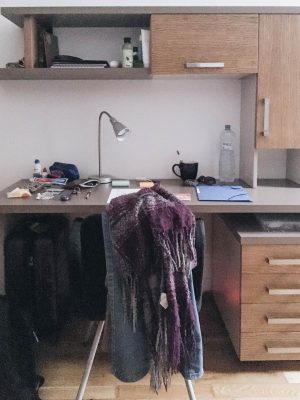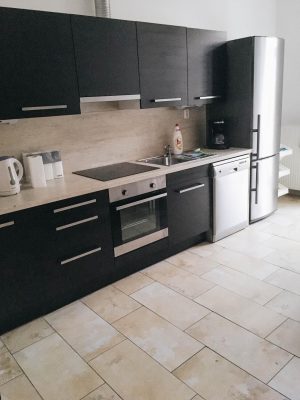Day in the Life: Prague
February 12, 2018
To be frank, I didn’t know what to expect from NYU Prague. From what I had heard about the city, there would be cobblestone streets, colorful buildings and the feel of a bygone era that stretches far beyond what I comprehend as history. The culture shock was present, but I soon settled into a routine.
Waking up in the Machova dorm, in downtown Prague, feels a little like home. No really, I’m pretty sure my bed at home is a similar model or something because all the furniture here looks like something out of an Ikea catalogue — clean design with lots of storage space. A sleek, fully stocked kitchen complements the hardwood aesthetic. There’s even a shared rice cooker available for use within the dorm!
To get around Prague, I’ve been relying on walking or the metro, but you can also take the trams, since all public transportation so far has been impeccably punctual. The month-long transportation pass NYU gives you allows you to use trams and the metro, but make sure to have it on you when you’re using public transport. It is technically an honor system, but not even a week after arriving, I was stopped by officials and asked to present my pass.
Machova is a five-minute walk from the Jana Masaryka, the nearest tram stop, and a 10-minute walk from Namesti Miru, the closest metro station. The dorm is separated from campus, but it’s a short walk from the Staroměstská stop. Well, it’s more like two buildings than a campus: the Blue Building and Richtrův dům. The former is a 15th century building that contains classrooms, administrative offices and the library, while the latter literally means “Richter Palace” and contains classrooms and practice rooms. Since the two are steps away from each other, there’s no need to panic if you have classes in both buildings.
Speaking of classes, a must-take class is Modern Political Dissent: The Art of Defeat, taught by Jan Urban, a teacher, historian and dissident during Communist rule in Czechoslovakia. Having lived through the Communist Revolution, his career is dedicated to uncovering the patterns of totalitarian regimes. There is a lot to learn from him, especially during a period of global fear mongering and demagoguery.
I would also recommend taking a Czech class while in Prague. Most younger locals can speak English, but a lot of store clerks speak limited English, and any effort at communicating in Czech is always appreciated. The language classes are also relatively small, allowing you to go at your own pace as you learn about the culture alongside the language.
My Czech professor, Jiří Novák, recommended several great restaurants and pubs nearby. One of these places is the Café Louvre, a 100-year-old cafe visited by the likes of Franz Kafka and Albert Einstein. If that isn’t enough of a pull, they also have Ferrero Rocher ice cream and an assortment of drinks, cakes and other goodies. The cafe is also right next to Quadrio, a mall that has several phone stores and a Tesco for any grocery needs. Remember to bring your own shopping bag, since there’s a fee if you need a bag. In addition, they’re super flimsy and may very well rip when you’re on the metro.
U Bulínů is a Czech restaurant less than five minutes away from Machova, and they have all classic Czech dishes available, alongside other less traditional options. My favorites so far are the beef goulash with fried potato pancakes and the braised beef with dumplings. Sidenote: Czech dumplings are a breadlike mainstay of Czech cuisine and nothing at all like a Chinese dumpling.
Walking home on those cobblestone streets, bundled against the cold and full from a hearty Czech meal, I feel a little less of an outsider. Sure, I still can’t carry a conversation beyond “Dobrý den!” (Good day!) and I still miss bubble tea like crazy, but I’m so, so grateful to be studying here, living here and learning more about this beautiful city over these next few months.
Email Joyce Lee at [email protected].




























































































































































